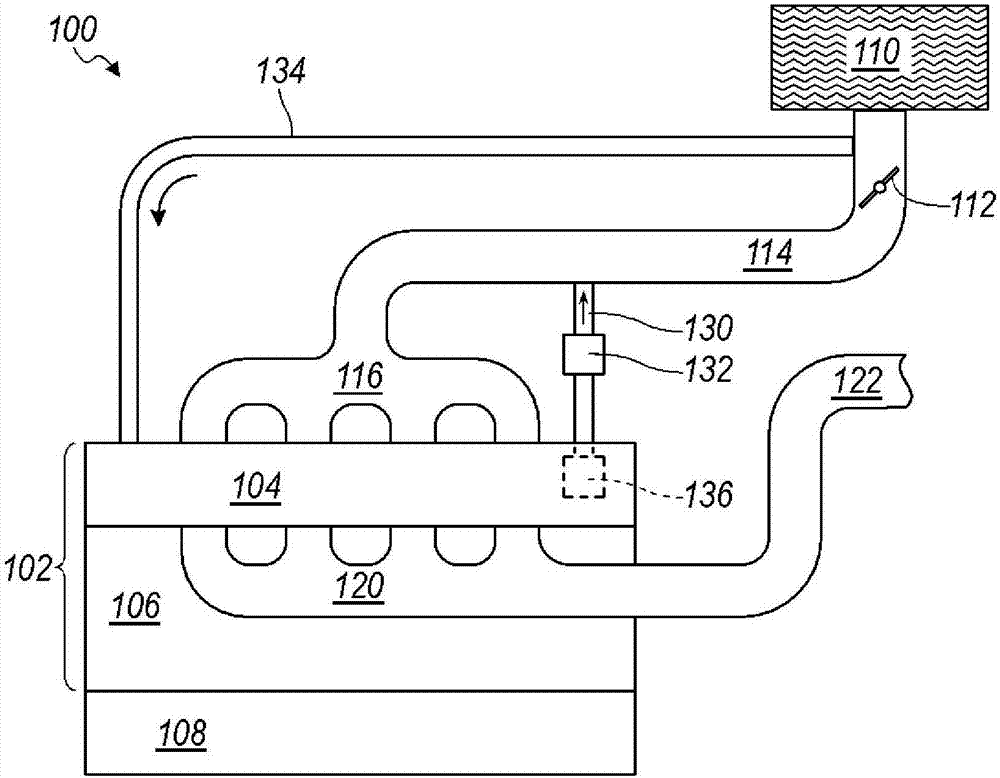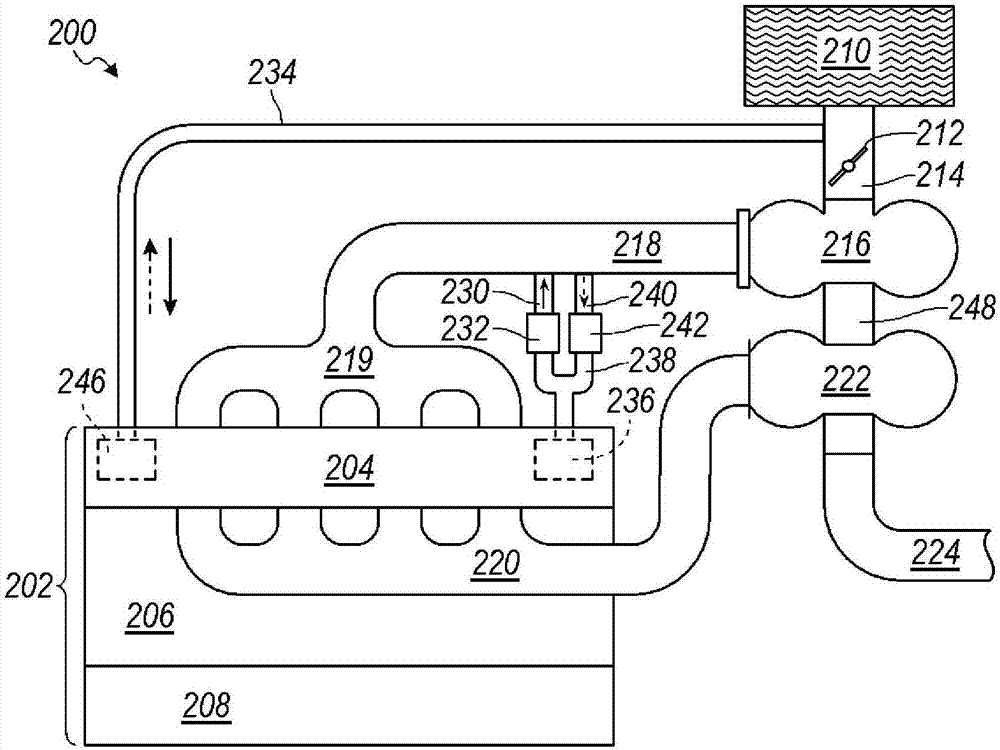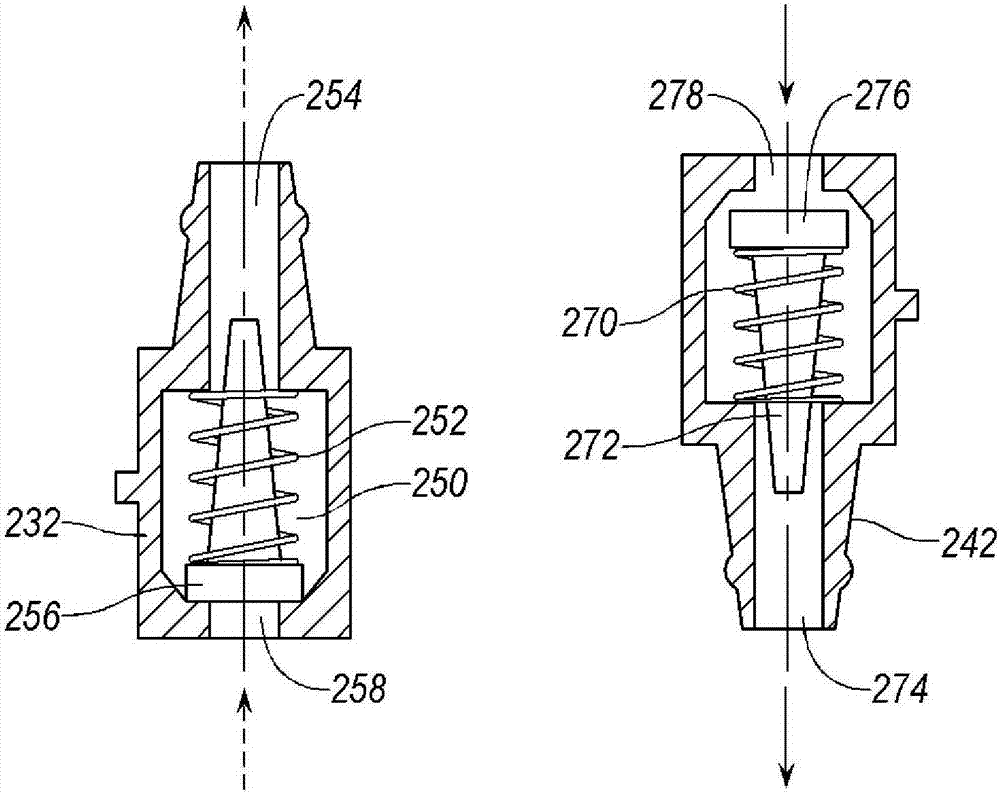System for reverse crankcase ventilation during boosted engine operation
A ventilation system and engine technology, applied in crankcase ventilation, engine components, combustion engines, etc., can solve problems such as pollution, reduced engine exhaust and air intake performance, engine knocking, etc.
- Summary
- Abstract
- Description
- Claims
- Application Information
AI Technical Summary
Problems solved by technology
Method used
Image
Examples
Embodiment Construction
[0029]Persons skilled in the art will appreciate that various features of an embodiment illustrated and described with reference to any one figure can be combined with features illustrated in one or more other figures to produce not specifically described features. Alternative embodiments illustrated or described. The combinations of features described provide representative embodiments of typical applications. However, various combinations and modifications of the features consistent with the teachings of the present disclosure may be contemplated for particular applications and implementations. Regardless of whether it is explicitly illustrated or described, those skilled in the art should be able to think of similar applications or implementations.
[0030] figure 2 One embodiment of a PCV system for an inline supercharged engine is shown. The engine system 200 has an internal combustion engine 200 having a cylinder head 204 coupled to an engine block 206 having an oil p...
PUM
 Login to View More
Login to View More Abstract
Description
Claims
Application Information
 Login to View More
Login to View More - R&D
- Intellectual Property
- Life Sciences
- Materials
- Tech Scout
- Unparalleled Data Quality
- Higher Quality Content
- 60% Fewer Hallucinations
Browse by: Latest US Patents, China's latest patents, Technical Efficacy Thesaurus, Application Domain, Technology Topic, Popular Technical Reports.
© 2025 PatSnap. All rights reserved.Legal|Privacy policy|Modern Slavery Act Transparency Statement|Sitemap|About US| Contact US: help@patsnap.com



